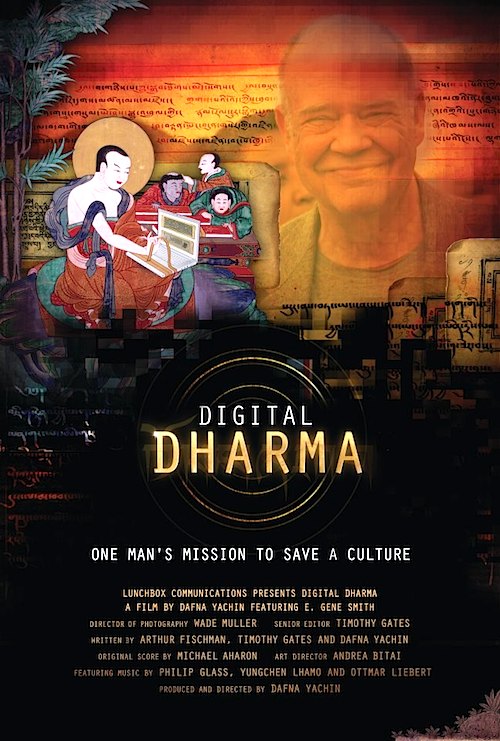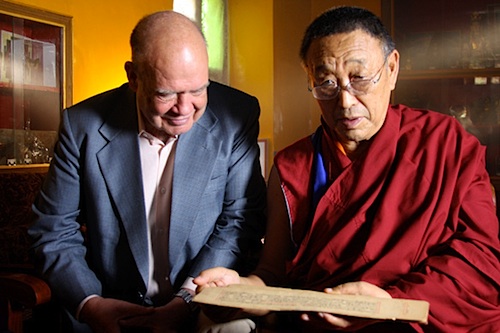 By Joe Bendel. The holy texts of Tibetan Buddhism are not very portable. That is not necessarily a problem if you are studying peacefully in a monastery, but it is a serious drawback if your country is invaded by an imperial power. Such was indeed the fate of Tibet. Following the 1950 Communist invasion, centuries of Tibetan culture were at of risk of being lost forever. However, one American scholar successfully spearheaded a drive to digitize, translate, and disseminate thousands of sacred and secular Tibetan texts. His campaign is documented in Dafna Yachin’s Digital Dharma (trailer here), which is currently screening during DocuWeeks New York 2012.
By Joe Bendel. The holy texts of Tibetan Buddhism are not very portable. That is not necessarily a problem if you are studying peacefully in a monastery, but it is a serious drawback if your country is invaded by an imperial power. Such was indeed the fate of Tibet. Following the 1950 Communist invasion, centuries of Tibetan culture were at of risk of being lost forever. However, one American scholar successfully spearheaded a drive to digitize, translate, and disseminate thousands of sacred and secular Tibetan texts. His campaign is documented in Dafna Yachin’s Digital Dharma (trailer here), which is currently screening during DocuWeeks New York 2012.
The late E. Gene Smith was a perennial student who specialized in East Asian languages with little commercial application. Tibetan was perfect for his purposes. Yet, as he immersed himself in the culture, he became increasingly alarmed about its chances for survival. After the initial invasion and again during the Cultural Revolution, monasteries were ruthlessly razed and books were systematically burned. As a result, many critical texts were completely unavailable to the Tibetan Buddhist Diaspora.
Fortunately, most of the books still survived, hidden away to avoid the Communist rampages. In the 1960’s, as a Library of Congress field worker in non-aligned India, Smith catalogued and facilitated the publication of hundreds of volumes smuggled out of Tibet. Retiring from the Federal government, Smith eventually co-founded the Tibetan Buddhist Resource Center, which would pursue the mission of digitization and translation, insuring that the wisdom of Tibet will survive and spread across the world.

Clearly, Yachin nearly venerates the Tibetologist as if he had been a lama himself. While Smith surely did invaluable work preserving the endangered Tibet culture, he was not infallible. In fact, the 1960’s era pacifist seems to have carried some residual ideological baggage, leading to the somewhat debatable decision to leave his collection to the Southwest University for Nationalities in Chengdu, Sichuan. Smith was determined to return the ancient documents to the Tibetans, laudably considering himself only a temporary caretaker. Yet, just how trustworthy a caretaker a Chinese chartered institution will be surely remains to be seen, particularly considering earlier efforts to transfer his collection were forestalled by the 2008 riots that swept across Tibet. At least the contents of his collection are now preserved for posterity.
Often fascinating, Digital offers viewers some helpful context for understanding Tibetan Buddhism as well as the captive nation’s thorny history over the past seventy years or so. It is also one of the more polished productions seen during this year’s DocuWeeks, featuring some stylish but also informative graphics. Despite prompting some unanswered questions, Digital Dharma tells a great story. In fact, it is the rather rare film that presents both religion and technology in a positive light. Respectfully recommended for amateur Tibetologists and China watchers, Digital Dharma screens through Thursday (8/23) at the IFC Center in New York, as DocuWeeks 2012 comes to a close.
LFM GRADE: B
Posted on August 21st, 2012 at 10:54am.